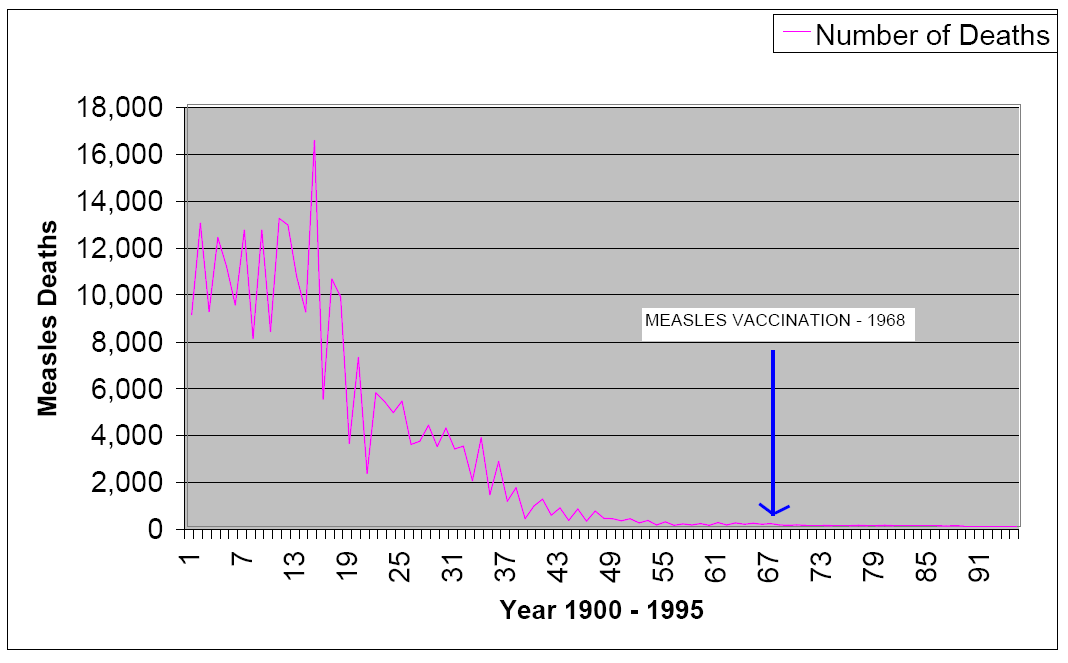Jenny McCarthy: Poster Girl For Self-Terrorization
If you want to quantify the alarming impact of the anti-vaccine movement, the chart above is a good place to start. It plots the cumulative number of new measles cases by month, for each year from 2001 to 2014.
There were 644 new measles cases in 27 states last year, according to the CDC. That's the biggest annual number we've seen in nearly a quarter-century. The vast majority of people who contracted the disease were unvaccinated, including the dozens of cases related to an outbreak at Disneyland in Orange County, California, which is basically Ground Zero in our current epidemic of anti-vaccine hysteria.
A 2014 AP-GfK survey found that only 51 percent of Americans were confident that vaccines are safe and effective, which is similar to the proportion who believe that houses can be haunted by ghosts. I don't need to make the case about how harmful these beliefs are -- it's been done plenty of times before, and moreover studies show that arguing with anti-vaxxers only makes them more confident in their beliefs.
But the latest CDC data illustrate the troubling resurgence of a disease that, as of 2000, had been declared eliminated. Anti-vaxxers are quite literally turning back the clock on decades of public health progress.

Vaccine deniers stick together. And now they’re ruining things for everyone
The rash of measles cases that started in Disneyland last month has now become one of the worst outbreaks of the diseases in California in the past 15 years. What started with a handful of cases has now grown to 62 confirmed cases across the state — and other cases have been reported in Colorado, Oregon, Utah, Washington state and Mexico.
California requires kids to get vaccinations for measles, mumps and rubella, but state law provides a loophole — parents can get a "personal belief waiver" if they think there's a link between vaccines and autism and other harmful effects. That's even though studies have continuously found vaccines to be safe.
Seth Mnookin, a journalist who's chronicled the anti-vaccination movement, observed a few years ago that you only had to go visit a Whole Foods to find anti-vaxxers.
Now, it doesn't seem that anyone's actually done the science on that one, but Mnookin's point here is obvious — the anti-vaccination movement is fueled by an over-privileged group of rich people grouped together who swear they won't put any chemicals in their kids (food or vaccines or whatever else), either because it's trendy to be all-natural or they don't understand or accept the science of vaccinations. Their science denying has been propelled further by celebrities, like Jenny McCarthy, Robert F. Kennedy, Jr. and actress Mayim Bialik, who is also a neuroscientist and even plays one on TV.
Of the 34 patients in the current measles outbreak whose vaccination status is known, only five were fully vaccinated, according to the Los Angeles Times. And the worst of the outbreak is centered in Orange County, ground zero for the anti-vaccination movement that's put children at risk over junk science.
No one has put it more succinctly than James Cherry, a specialist in pediatric infectious diseases at the University of California, Los Angeles, who told the New York Times, "There are some pretty dumb people out there."
The real problem is that these people tend to stick together. A new study this week finds strong evidence that people who rejected vaccines for their young children are clustered together in the same communities. And that only increases the risk that measles — a highly contagious respiratory disease that was believed to have been eradicated 15 years ago — will spread to more children.
Researchers analyzing records for about 55,000 children born in 13 northern California counties between 2010 and 2012 found five geographic clusters of 3-year-olds with significantly higher rates of vaccine refusal.
These included East Bay (10.2 percent refusal rate); Marin and southwest Sonoma counties (6.6 percent refusal); northeastern San Francisco (7.4 percent); northeastern Sacramento County and Roseville (5.5 percent); and south of Sacramento (13.5 percent). By comparison, the vaccine refusal rate outside these clusters is 2.6 percent, according to the study published in the journal Pediatrics.
These are some of the most privileged parts of the Bay Area, although South Bay counties around Silicon Valley aren't on the list. The median household income in Marin is $90,535, compared to $61,094 in the state of California. In Alameda County (home to towns like Berkeley) in the East Bay, it's $72,112. One exception is Sacramento, where median income is only $55,064.
The communities where anti-vaxxers cluster are also among the most liberal. Marin County, San Francsico County and Alameda County all voted overwhelmingly for Obama in 2008. In Marin, 78 percent of the vote went to Obama. In San Francisco, it was 84 percent. And in Alameda, it was 79 percent. That's all higher than what Obama got in his own home county of Cook County, Illinois. Here, too, Sacramento is an exception. Only 58 percent of the county went for Obama in 2008.
The study also found five clusters with significant greater rates of under-immunization among children who turned 3 years old between 2010 and 2012. The under-immunization rate ranged between 18 percent and 23 percent in these clusters, compared to 11 percent outside them, and they were generally in the same areas where vaccine refusers were clustered.
The researchers wrote that they hope their analysis will help policymakers and health-care providers focus efforts to boost vaccination rates in specific areas. We'll see just how strongly that message is received, though.Previous research has shown that confronting anti-vaxxers with science only makes them more likely to reject vaccinations.




No comments:
Post a Comment